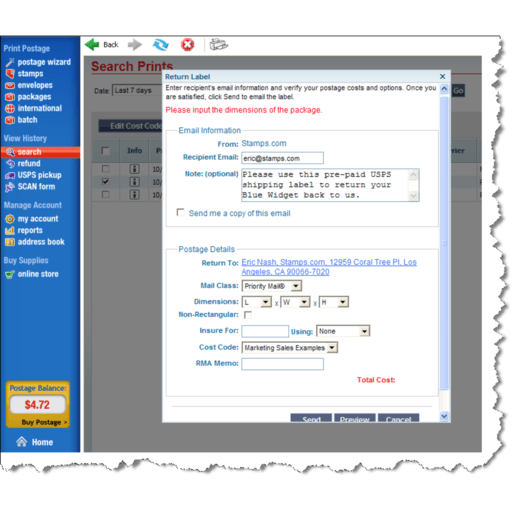

The IRS and the taxpayers agreed that the postage label was not a postmark made by the USPS and that under Treas. If the document is received after the period when a document mailed and postmarked by the USPS would ordinarily be received, to satisfy the mailbox rule the taxpayer may also establish that it was timely mailed, that the delay in receiving the document was due to a delay in the transmission of the US mail and was the cause of the delay. It was also established how long mail ordinarily takes to be received in Washington, DC (the location of the Tax Court) from Utah (where the petition was mailed).įor a postmark not made by the USPS, the mailbox rule generally requires that the postmark reflect a legible date within the timely filing period and that the document be received during the time when a document mailed and postmarked by the USPS would ordinarily be received. Through that research, which the IRS shared with the Tax Court, the IRS determined the taxpayers’ petition was “most likely deposited and collected” by the USPS on the last date for timely filing the petition. In addition, the Internal Revenue Service (IRS) conducted its own research into when the USPS received the Tax Court petition.

Attached to her declaration was a US Postal Service (USPS) “certified mail receipt” created by the administrative assistant bearing the same date as the postage label. The administrative assistant who created the postage label supplied the court with a declaration under penalty of perjury stating that she went to a US Post Office the same day as the postage label date and mailed the petition. In Pearson, the Tax Court received the taxpayers’ petition one week after the 90-day period expired, but the envelope in which the petition was mailed bore a postage label dated within the 90-day period. Taxpayers generally have 90 days to file a petition with the Tax Court after receiving a notice of deficiency. Commissioner, the Tax Court, in a court-reviewed opinion, held that a Tax Court petition mailed with a postage label was timely filed under the mailbox rule. There are, however, procedural requirements which must be satisfied.

When an item is received after the filing deadline, the mailbox rule can make all the difference. Within the Internal Revenue Code (Code) is a rule commonly known as the “mailbox rule” or the “timely mailed, timely filed rule.” Under Code Section 7502(b), the date that an item-including a Tax Court petition-is postmarked and mailed can also be the date the item is considered filed.


 0 kommentar(er)
0 kommentar(er)
